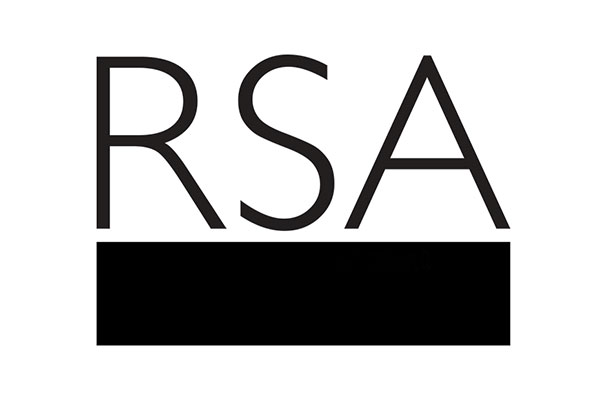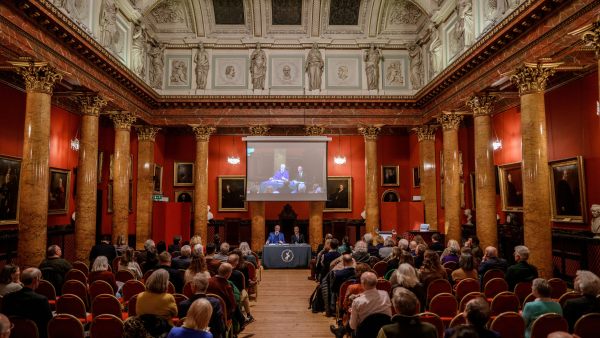How law and education fed the flames of the global war that blighted the people and environment of this uniquely misrepresented country
After years of minuscule media coverage, including a reported total of five minutes across the three major American television networks for the entirety of 2020, Afghanistan surged into the global limelight in late summer 2021. The evaporation of the US-sponsored Afghan government, enacted by the precipitous flight of Ashraf Ghani from Kabul’s monstrously fortified Green Zone, took most observers by surprise on 15 August 2021. US media punditry joined US officialdom in the universal chorus of derision toward Ghani as he settled into his new life as a political outcast in the United Arab Emirates (UAE). American officials were less condemnatory toward their declared medieval adversaries and reincarnated rulers of Afghanistan, the Taliban, with whom they coordinated to evacuate suddenly entrapped American citizens and some, but certainly not all, of their local allies.
With girls’ schools and access to universities for women arguably the most common variables invoked in discussions of the recent regime change, education is clearly a contentious arena of political action in Afghanistan. As such, it will be useful to outline its history before turning to questions of law and the environmental impact of war in this uniquely misrepresented country.
Politics and education
Since the early 20th century, education in Afghanistan has been tied to the history of international actors, who used it as a domain to advance their interests in the country. In the first half of the century, Ottomans-cum-Turks, French, Germans and English all provided teachers, curricula, funding and exchange opportunities for Afghan students, teachers, scholars and bureaucrats. Although Afghans earned doctorates at American universities as early as the 1930s, the US became a leading actor in the country’s educational system after the Second World War. Education was an important supporting field of action in the context of the Helmand Valley Development Project that was the centrepiece of US relations with Afghanistan from the late 1940s through the 1970s.
The February 2020 Doha peace agreement between the US and the Taliban, which significantly did not include Ghani’s administration, accounted for the aforementioned 300 seconds of US network news. The chief US negotiator was the Afghan-American diplomat Zalmay Khalilzad; in the 1960s both he and Ghani spent time as high school exchange students in the US. The pair matriculated at the American University of Beirut, a nest of CIA activity in the Middle East during the Cold War, before earning doctorates from, respectively, Columbia University and the University of Chicago in the 1970s and 1980s. Columbia University, in particular its Teachers College, granted doctoral degrees to dozens of influential Afghan nationals during this period. For example, the Afghan head of state at the time of the 1979 Soviet invasion, Hafizullah Amin, studied there, although he did not complete his degree. Publicly funded programmes routed through USAID and the State Department in conjunction with dozens of American colleges and universities combined to grant degrees to hundreds of Afghans during the Cold War.
Considerable resources in both countries were necessary to recruit and vet candidates in Afghanistan and place them at US universities. The key actor in these Cold War education politics was the American University Field Staff representative in Afghanistan, the Harvard archaeology-trained Louis Dupree, who for decades split his time between Afghanistan and the US, ostensibly as a scholar of anthropology. However, in addition to maintaining a high public profile through these educational programmes, Dupree followed in the footsteps of his mentor at Harvard, Carleton Coon, in also serving as a covert intelligence agent. Dupree’s CIA connections positioned him well for work with the anti-Soviet Afghan mojahedin in the 1980s, which remains the most extensive and expensive covert operation in US history.
The mojahedin are the forefathers of the Taliban, and they too have an international educational history. Under Director Thomas Gouttiere, the Center for Afghanistan Studies at the University of Nebraska-Omaha produced the infamous pro-jihad textbooks used in Afghan refugee schools in Pakistan. Additionally, Saudi Arabia’s financing of Pakistani madrassas in the Afghan borderlands instilled Wahhabi ideology among the mojahedin, who were also exposed to staunchly conservative curricular influences through madrassas supported by South Asian Deobandi and Tablighi Jamaat Islamists.
There are clear contradictions in the international history of education in Afghanistan before 2001, insofar as US policies toward official educational projects in Afghanistan trained multiple Afghan heads of state and hundreds of high-profile Afghans, while US covert educational activities engaged and trained thousands of Afghan mojahedin who became the foot soldiers and leaders of the Taliban.
The post-2001 celebration of education in Afghanistan, girls’ schools in particular, must be considered in light of complex historical cause and consequence and an international military occupation that politically instrumentalised all forms of education. At the university level, the American University of Afghanistan was the most conspicuous example of Afghan knowledge cultivation designed to fill an American political appetite, and a similarly overriding US national political motivation was evident in the provisioning of international educational opportunities, most importantly through the Fulbright Program that brought thousands of Afghan students to the US. The proliferation of girls’ schools in Afghanistan mirrors the development of the Afghan military, in that it involved additional thousands of Afghans training at military bases and schools in the US. Both American-sponsored ventures are notorious for proportionally very large numbers of ‘ghost’ soldiers, schools and students that existed only on paper. The ever-increasing volumes of misdirected US funds for Afghan students and soldiers ultimately fuelled not only ever-widening lawlessness and warlordism that characterised the US imperium in Afghanistan, but also, as the war wore on, the resurgence and growth of local support for the Taliban.
In late 2021, education in Afghanistan is being regressively reconfigured by the Taliban, while simultaneously US and other governments, American and other universities, and a sea of international non-profit organisations and security contractors, have effectively coordinated for the continuing evacuation of thousands of Afghans, women and girls in particular, to continue their education in countries all over the world. This latest phase in the international history of education in Afghanistan involves the extraction of human resources produced locally in the education sector which was a very small component of the vast global corporate–military complex that profited exorbitantly during the war.
The rule of law
The rule of law became an ideological keystone in the local war that was globally marketed as an exercise in humanitarianism and the advancement of democracy, despite abundant evidence to the contrary. To project democracy founded on the rule of law for the benefit of the Afghan people, Americans and their international allies sponsored elections at municipal, parliamentary and national levels, police and judicial training for women especially, and many other initiatives in Afghanistan that were interlinked with major public and private US universities. For example, Stanford and New York University devoted considerable resources to rule of law programmes that attracted students, grew curricula, provided lucrative consulting opportunities for faculty and generated substantial institutional grants.
Law programmes at public institutions such as the University of Virginia created faculty positions for government rule of law practitioners with experience in Afghanistan, and coordinated with government officials to host training programmes for visiting, preponderantly female, Afghan civil society leaders. Scholars with no legal training and/or no background in or with Afghanistan suddenly began writing on the rule of law in Afghanistan, while programmes sprung up at institutional interfaces between the academy and government agencies; that is, ‘think tanks’ such as the United States Institute of Peace in particular. The rule of law in Afghanistan was a lucrative business: institutionally transformative for many para-governmental organisations and US universities, and career-advancing for more American academics and entrepreneurial Afghanistan ‘experts’.
Just as the remarkable educational development in Afghanistan from 2001 to 2021 was contextualised by and subordinated to the exigencies of combat, so was the advancement of the rule of law in Afghanistan framed by the Global War on Terror.
The vast resources devoted to promoting the rule of law in Afghanistan were contravened by a wide range of activities that transgressed the boundaries of international law and violated human rights. I am referencing a legally problematic matrix of incessant drone bombing, night raids, abductions and illegal renditions to a global network of black sites where a regime of torture took shape, resulting in the 2020 International Criminal Court indictment of the US for war crimes in Afghanistan.
War and the environment
Beyond the many legal, ethical and moral questions raised by the Global War on Terror, the conflict has resulted in irreversible long-term environmental degradation in Afghanistan and Iraq. It has involved a relentless aerial bombardment campaign that began with ‘daisy cutters’ in the north and ‘bunker busters’ in the east and south of the country in the autumn of 2001 and culminated with the largest bomb short of a nuclear weapon ever used, the ‘mother of all bombs’, which detonated in the Achin district of Nangarhar in 2017. This 20-year monsoon of bombs in Afghanistan has carried depleted uranium into groundwater systems in the east and south especially, where birth defects among both humans and animals are now possibly endemic, as appears to be the case in Fallujah, Iraq.
At the height of the American presence there were 100,000 troops stationed in scores of military bases in Afghanistan. Each of these leaked and dumped toxins into the environment, perhaps most grievously through burn pits where the incineration of all forms of military waste including plastics, metals and oils have poisoned the topsoil near and far from the base in question. Beyond this, large swathes of Afghanistan’s agricultural landscape and vital routes of local movement have been landmined into disuse by the US and its proxies. In this regard, the US is unique among its global allies for not being a signatory to the 1997 international Mine Ban Treaty.
This slow violence reaped upon local environments is a long-term mortal threat to the physical and economic health of the Afghan people. The overweighted carbon footprint of the US military became inescapable in Kabul, which now ranks among the most polluted cities on earth, resulting in a poor respiratory health profile for the population that amplified the ravages of Covid-19. The heavily polluted surface and groundwaters of Afghanistan are becoming increasingly scarce due to climate change-induced droughts that have resulted in repeated years of famine, while deglaciation has been rapidly depleting Afghanistan’s Hindu Kush Himalayan natural water tower. The scale of water and food insecurity in Afghanistan rings an alarm call to environmental action for local livelihood security to which the international community must respond, because it is primarily responsible for this human tragedy.
Decades-long international intervention in Afghanistan set in motion an unforeseen chain of events with long-term consequences. Whether these interventions have been undertaken for the advancement of foreign ideological and political agendas, or for altruistic reasons (such the evacuation of precious ‘human capital’ – educated women and girls – by international charities and non-profit organisations), Afghanistan’s natural resources have been left damaged and depleted.
More must be done to educate constituencies and stakeholders about this unparalleled, global, war-induced catastrophe. Afghan leaders of all kinds, at all levels, in all locations, can speak with one voice about the remedial action that is necessary for the survival of all life forms in our cherished shared habitat.
After years of minuscule media coverage, including a reported total of five minutes across the three major American television networks for the entirety of 2020, Afghanistan surged into the global limelight in late summer 2021. The evaporation of the US-sponsored Afghan government, enacted by the precipitous flight of Ashraf Ghani from Kabul’s monstrously fortified Green Zone, took most observers by surprise on 15 August 2021. US media punditry joined US officialdom in the universal chorus of derision toward Ghani as he settled into his new life as a political outcast in the United Arab Emirates (UAE). American officials were less condemnatory toward their declared medieval adversaries and reincarnated rulers of Afghanistan, the Taliban, with whom they coordinated to evacuate suddenly entrapped American citizens and some, but certainly not all, of their local allies.
With girls’ schools and access to universities for women arguably the most common variables invoked in discussions of the recent regime change, education is clearly a contentious arena of political action in Afghanistan. As such, it will be useful to outline its history before turning to questions of law and the environmental impact of war in this uniquely misrepresented country.
Politics and education
Since the early 20th century, education in Afghanistan has been tied to the history of international actors, who used it as a domain to advance their interests in the country. In the first half of the century, Ottomans-cum-Turks, French, Germans and English all provided teachers, curricula, funding and exchange opportunities for Afghan students, teachers, scholars and bureaucrats. Although Afghans earned doctorates at American universities as early as the 1930s, the US became a leading actor in the country’s educational system after the Second World War. Education was an important supporting field of action in the context of the Helmand Valley Development Project that was the centrepiece of US relations with Afghanistan from the late 1940s through the 1970s.
The February 2020 Doha peace agreement between the US and the Taliban, which significantly did not include Ghani’s administration, accounted for the aforementioned 300 seconds of US network news. The chief US negotiator was the Afghan-American diplomat Zalmay Khalilzad; in the 1960s both he and Ghani spent time as high school exchange students in the US. The pair matriculated at the American University of Beirut, a nest of CIA activity in the Middle East during the Cold War, before earning doctorates from, respectively, Columbia University and the University of Chicago in the 1970s and 1980s. Columbia University, in particular its Teachers College, granted doctoral degrees to dozens of influential Afghan nationals during this period. For example, the Afghan head of state at the time of the 1979 Soviet invasion, Hafizullah Amin, studied there, although he did not complete his degree. Publicly funded programmes routed through USAID and the State Department in conjunction with dozens of American colleges and universities combined to grant degrees to hundreds of Afghans during the Cold War.
Considerable resources in both countries were necessary to recruit and vet candidates in Afghanistan and place them at US universities. The key actor in these Cold War education politics was the American University Field Staff representative in Afghanistan, the Harvard archaeology-trained Louis Dupree, who for decades split his time between Afghanistan and the US, ostensibly as a scholar of anthropology. However, in addition to maintaining a high public profile through these educational programmes, Dupree followed in the footsteps of his mentor at Harvard, Carleton Coon, in also serving as a covert intelligence agent. Dupree’s CIA connections positioned him well for work with the anti-Soviet Afghan mojahedin in the 1980s, which remains the most extensive and expensive covert operation in US history.
The mojahedin are the forefathers of the Taliban, and they too have an international educational history. Under Director Thomas Gouttiere, the Center for Afghanistan Studies at the University of Nebraska-Omaha produced the infamous pro-jihad textbooks used in Afghan refugee schools in Pakistan. Additionally, Saudi Arabia’s financing of Pakistani madrassas in the Afghan borderlands instilled Wahhabi ideology among the mojahedin, who were also exposed to staunchly conservative curricular influences through madrassas supported by South Asian Deobandi and Tablighi Jamaat Islamists.
There are clear contradictions in the international history of education in Afghanistan before 2001, insofar as US policies toward official educational projects in Afghanistan trained multiple Afghan heads of state and hundreds of high-profile Afghans, while US covert educational activities engaged and trained thousands of Afghan mojahedin who became the foot soldiers and leaders of the Taliban.
The post-2001 celebration of education in Afghanistan, girls’ schools in particular, must be considered in light of complex historical cause and consequence and an international military occupation that politically instrumentalised all forms of education. At the university level, the American University of Afghanistan was the most conspicuous example of Afghan knowledge cultivation designed to fill an American political appetite, and a similarly overriding US national political motivation was evident in the provisioning of international educational opportunities, most importantly through the Fulbright Program that brought thousands of Afghan students to the US. The proliferation of girls’ schools in Afghanistan mirrors the development of the Afghan military, in that it involved additional thousands of Afghans training at military bases and schools in the US. Both American-sponsored ventures are notorious for proportionally very large numbers of ‘ghost’ soldiers, schools and students that existed only on paper. The ever-increasing volumes of misdirected US funds for Afghan students and soldiers ultimately fuelled not only ever-widening lawlessness and warlordism that characterised the US imperium in Afghanistan, but also, as the war wore on, the resurgence and growth of local support for the Taliban.
In late 2021, education in Afghanistan is being regressively reconfigured by the Taliban, while simultaneously US and other governments, American and other universities, and a sea of international non-profit organisations and security contractors, have effectively coordinated for the continuing evacuation of thousands of Afghans, women and girls in particular, to continue their education in countries all over the world. This latest phase in the international history of education in Afghanistan involves the extraction of human resources produced locally in the education sector which was a very small component of the vast global corporate–military complex that profited exorbitantly during the war.
The rule of law
The rule of law became an ideological keystone in the local war that was globally marketed as an exercise in humanitarianism and the advancement of democracy, despite abundant evidence to the contrary. To project democracy founded on the rule of law for the benefit of the Afghan people, Americans and their international allies sponsored elections at municipal, parliamentary and national levels, police and judicial training for women especially, and many other initiatives in Afghanistan that were interlinked with major public and private US universities. For example, Stanford and New York University devoted considerable resources to rule of law programmes that attracted students, grew curricula, provided lucrative consulting opportunities for faculty and generated substantial institutional grants.
Law programmes at public institutions such as the University of Virginia created faculty positions for government rule of law practitioners with experience in Afghanistan, and coordinated with government officials to host training programmes for visiting, preponderantly female, Afghan civil society leaders. Scholars with no legal training and/or no background in or with Afghanistan suddenly began writing on the rule of law in Afghanistan, while programmes sprung up at institutional interfaces between the academy and government agencies; that is, ‘think tanks’ such as the United States Institute of Peace in particular. The rule of law in Afghanistan was a lucrative business: institutionally transformative for many para-governmental organisations and US universities, and career-advancing for more American academics and entrepreneurial Afghanistan ‘experts’.
Just as the remarkable educational development in Afghanistan from 2001 to 2021 was contextualised by and subordinated to the exigencies of combat, so was the advancement of the rule of law in Afghanistan framed by the Global War on Terror.
The vast resources devoted to promoting the rule of law in Afghanistan were contravened by a wide range of activities that transgressed the boundaries of international law and violated human rights. I am referencing a legally problematic matrix of incessant drone bombing, night raids, abductions and illegal renditions to a global network of black sites where a regime of torture took shape, resulting in the 2020 International Criminal Court indictment of the US for war crimes in Afghanistan.
War and the environment
Beyond the many legal, ethical and moral questions raised by the Global War on Terror, the conflict has resulted in irreversible long-term environmental degradation in Afghanistan and Iraq. It has involved a relentless aerial bombardment campaign that began with ‘daisy cutters’ in the north and ‘bunker busters’ in the east and south of the country in the autumn of 2001 and culminated with the largest bomb short of a nuclear weapon ever used, the ‘mother of all bombs’, which detonated in the Achin district of Nangarhar in 2017. This 20-year monsoon of bombs in Afghanistan has carried depleted uranium into groundwater systems in the east and south especially, where birth defects among both humans and animals are now possibly endemic, as appears to be the case in Fallujah, Iraq.
At the height of the American presence there were 100,000 troops stationed in scores of military bases in Afghanistan. Each of these leaked and dumped toxins into the environment, perhaps most grievously through burn pits where the incineration of all forms of military waste including plastics, metals and oils have poisoned the topsoil near and far from the base in question. Beyond this, large swathes of Afghanistan’s agricultural landscape and vital routes of local movement have been landmined into disuse by the US and its proxies. In this regard, the US is unique among its global allies for not being a signatory to the 1997 international Mine Ban Treaty.
This slow violence reaped upon local environments is a long-term mortal threat to the physical and economic health of the Afghan people. The overweighted carbon footprint of the US military became inescapable in Kabul, which now ranks among the most polluted cities on earth, resulting in a poor respiratory health profile for the population that amplified the ravages of Covid-19. The heavily polluted surface and groundwaters of Afghanistan are becoming increasingly scarce due to climate change-induced droughts that have resulted in repeated years of famine, while deglaciation has been rapidly depleting Afghanistan’s Hindu Kush Himalayan natural water tower. The scale of water and food insecurity in Afghanistan rings an alarm call to environmental action for local livelihood security to which the international community must respond, because it is primarily responsible for this human tragedy.
Decades-long international intervention in Afghanistan set in motion an unforeseen chain of events with long-term consequences. Whether these interventions have been undertaken for the advancement of foreign ideological and political agendas, or for altruistic reasons (such the evacuation of precious ‘human capital’ – educated women and girls – by international charities and non-profit organisations), Afghanistan’s natural resources have been left damaged and depleted.
More must be done to educate constituencies and stakeholders about this unparalleled, global, war-induced catastrophe. Afghan leaders of all kinds, at all levels, in all locations, can speak with one voice about the remedial action that is necessary for the survival of all life forms in our cherished shared habitat.
Shah Mahmoud Hanifi is Professor of History at James Madison University, Virginia
This article first appeared in the RSA Journal Issue 4 2021
Related articles
-
Counting the cost of bowling alone
Blog
Andy Haldane
In his 2025 CEO Lecture, Andy Haldane addresses how the ever-increasing cross-border flows of goods, people and information affect widening divisions and accelerate the depletion of social capital.
-
Andy Haldane, CEO of the RSA, calls for ‘social connection revolution’ to reverse economic and social decline
Press release
RSA CEO Andy Haldane delivered his annual Chief Executive’s Lecture to a sold-out audience at RSA House.
-
The 2024 Angus Millar Lecture
Fellowship news
Fionna Monk
The 2024 Angus Millar Lecture was led by award-winning novelist Andrew O’Hagan on the theme of 'Art, Literature and Truth in the Era of Fake News, Algorithms and Artificial Intelligence'.




Be the first to write a comment
Comments
Please login to post a comment or reply
Don't have an account? Click here to register.